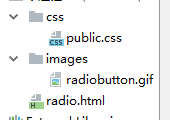I tried to implement GAE's webapp2 session, but there seems very little documentation about it. According to http://webapp-improved.appspot.com/api/webapp2_extras/sessions.html, my steps are as follows:
1.Configure and add config to the main application:
config = {}
config['webapp2_extras.sessions'] = {
'secret_key': 'my_secret_key',
}
app = webapp2.WSGIApplication([...], config=config)
2.Create session in the login handler
# Delete existent session
--> not mention in the tutorial
# member is found
self.session_store = sessions.get_store(request=handler.request)
self.session['account'] = member.account
3.Check if a session exists at various locations in my program
if self.session['account']:
# Session exists
4.Delete session when user logs out
--> not mentioned in the tutorial
My questions:
I got error message " ... object has no attribute 'session'" during the session creation process (Step 2)
How do I delete a session in steps 2 and 4?
Is the overall session management process correct?
Thanks.
Here is an example of the handler and how to use webapp2 extra sessions
main.py with the BaseHandler and a MainHandler
import webapp2
from webapp2_extras import sessions
class BaseHandler(webapp2.RequestHandler): # taken from the webapp2 extrta session example
def dispatch(self): # override dispatch
# Get a session store for this request.
self.session_store = sessions.get_store(request=self.request)
try:
# Dispatch the request.
webapp2.RequestHandler.dispatch(self) # dispatch the main handler
finally:
# Save all sessions.
self.session_store.save_sessions(self.response)
@webapp2.cached_property
def session(self):
# Returns a session using the default cookie key.
return self.session_store.get_session()
class YourMainHandler(BaseHandler):
def get(self):
....
self.session['foo'] = 'bar'
def post(self):
foo = self.session.get('foo')
And if you have a seperate login.py :
.... other imports
import main
class Login(main.BaseHandler):
def get(self):
....
self.session['foo'] = 'bar'
def post(self):
foo = self.session.get('foo')
This may not be a direct answer to the question, but it is a solution I found using gaesessions instead of GAE's webapp2 session and I would like to share with everybody. Here we go:
Download gaesessions from https://github.com/dound/gae-sessions by clicking "Download ZIP" button. The downloaded file is "gae-sessions-master.zip".
Unzip the file (a directory "gae-sessions-master" will be created), and copy the directory "gaessions" to the root directory of your application (i.e., where "app.yaml" is)
Create a file called "appengine_config.py" in the root directory, with the following content (copied form https://github.com/dound/gae-sessions/tree/master/demo):
from gaesessions import SessionMiddleware
# Original comments deleted ...
# Create a random string for COOKIE_KDY and the string has to
# be permanent. "os.urandom(64)" function may be used but do
# not use it *dynamically*.
# For me, I just randomly generate a string of length 64
# and paste it here, such as the following:
COOKIE_KEY = 'ppb52adekdhD25dqpbKu39dDKsd.....'
def webapp_add_wsgi_middleware(app):
from google.appengine.ext.appstats import recording
app = SessionMiddleware(app, cookie_key=COOKIE_KEY)
app = recording.appstats_wsgi_middleware(app)
return app
Create a session when a user logs in (variable account is the user's account):
from gaesessions import get_current_session
session = get_current_session()
if session.is_active():
session.terminate()
# start a session for the user (old one was terminated)
session['account'] = account
Check if the user's session exists, if yes, return user's account:
from gaesessions import get_current_session
def checkSession():
session = get_current_session()
if session.is_active():
return session['account']
return False
Delete the session when the user logs out:
def logout():
session = get_current_session()
if session.is_active():
session.terminate()
Finally, you may create a cron job to clean expired sessions periodically:
cron.yaml:
- description: daily session cleanup
url: /clean_up_sessions
schedule: every day 3:00
timezone: ... (Your time zone)
Function:
from gaesessions import delete_expired_sessions
class clean_up_sessions(webapp2.RequestHandler):
def get(self):
while not delete_expired_sessions():
pass
Hope this helps.
In your RequestHandler override dispatch:
from webapp2_extras import sessions
def dispatch(self):
self.session_store = sessions.get_store(request=self.request)
try:
webapp2.RequestHandler.dispatch(self)
finally:
self.session_store.save_sessions(self.response)
and make a webapp2.cached_property called session:
@webapp2.cached_property
def session(self):
return self.session_store.get_session(backend="<whatever you want here>")
When you want to access session values, you do self.session[<key>]
When a user logs in, you can call either:
self.auth.get_user_by_password(auth_id, password, remember=True,
save_session=True)
which will take care of getting rid of the old session and creating the new one for you, or:
self.auth.set_session(self.auth.store.user_to_dict(self.user), remember=True)
As far as logging out, all you should need to call is:
self.auth.unset_session()



